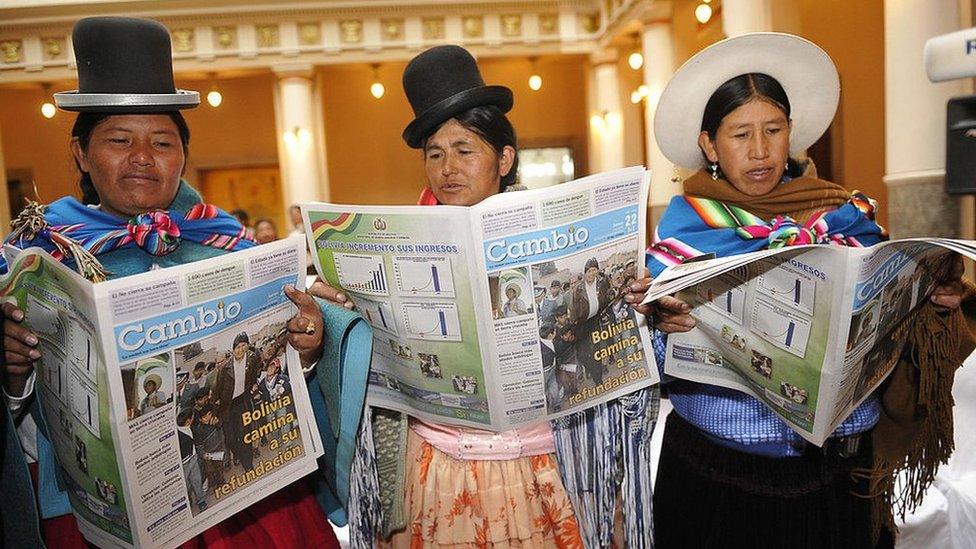Bolivia media guide
- Published
This page is no longer being updated. It was last updated on 27 January 2023

Many media outlets are in private hands and ownership is highly concentrated.
The government controls numerous newspapers and has stepped up monitoring of critical media, especially on social networks, says the NGO Reporters Without Borders (RSF).
The political turbulence and instability as a result of the forced exile of former President Evo Morales in 2019, saw an increase in attacks on journalists. The 2020 election of Luis Arce brought this to an end.
Officials use legal, political and economic means to pressure independent media, says Freedom House. It says self-censorship is commonplace, with many journalists fearing that they could lose their jobs over reporting critical of the authorities.
Media deemed to "play party politics" or "insult" the government face being denied funding from state advertising, says Reporters Without Borders. Arbitrary arrests and impunity for violence against journalists are other problems.
Newspaper readership is limited by low literacy. Radio is important, especially in rural areas. There are hundreds of stations. The government operates a TV station and community radios.
There were 8.9 million internet users by July 2022, comprising 74% of the population (Internetworldstats.com).
Press
La Razon, external - La Paz daily
Los Tiempos , external- Cochabamba daily
El Diario, external - La Paz daily
El Deber, external - Santa Cruz daily
El Mundo , external- Santa Cruz daily
Correo del Sur , external- Sucre daily
Television
Unitel (Canal 9), external - private, Santa Cruz
ATB (Canal 9) , external- private, La Paz
Red Uno (Canal 11), external - private, La Paz
Bolivia TV (Canal 7), external - government-run, commercial
TV Universitaria (Canal 13), external - university station, La Paz
Radio
Radio Fides , external- Catholic, news and talk
Radio Panamericana, external - national, news and talk network
Red Patria Nueva, external - state-run, community network
News agencies
Agencia Boliviana de Informacion (ABI) , external- government-run
Agencia de Noticias Fides (ANF) , external- owned by Catholic Church